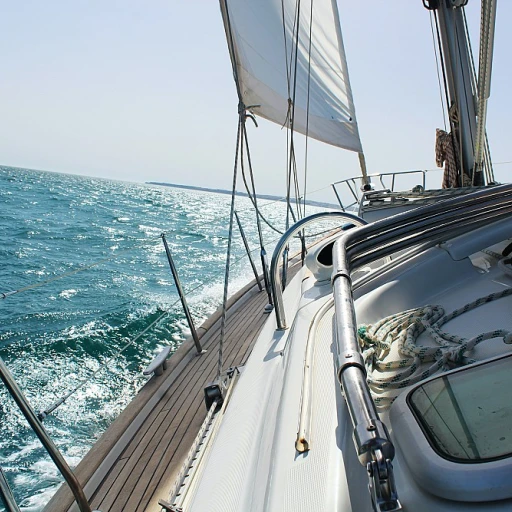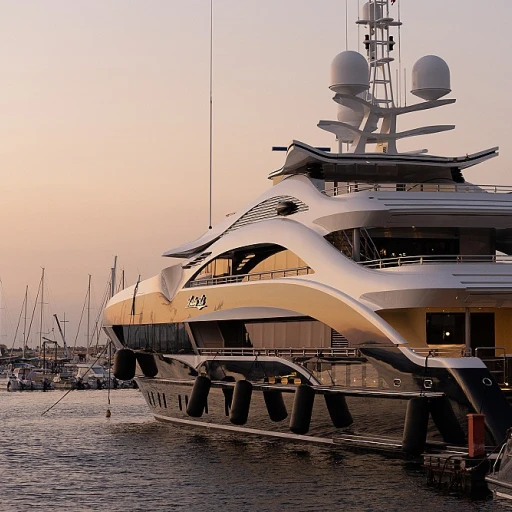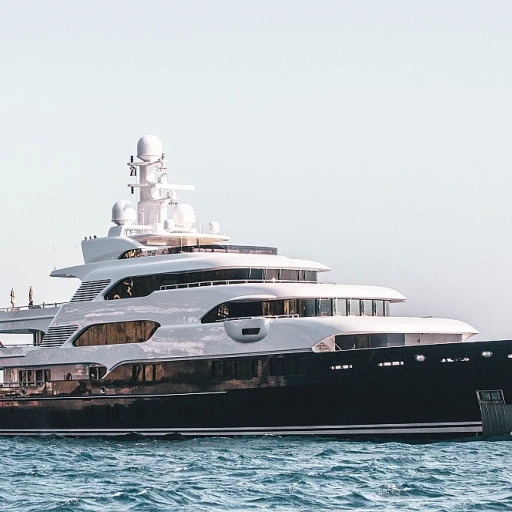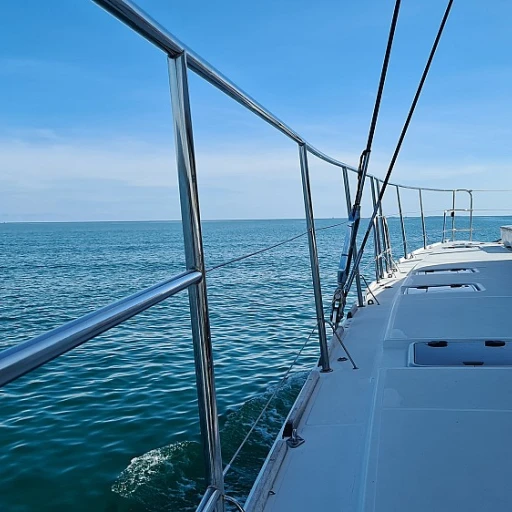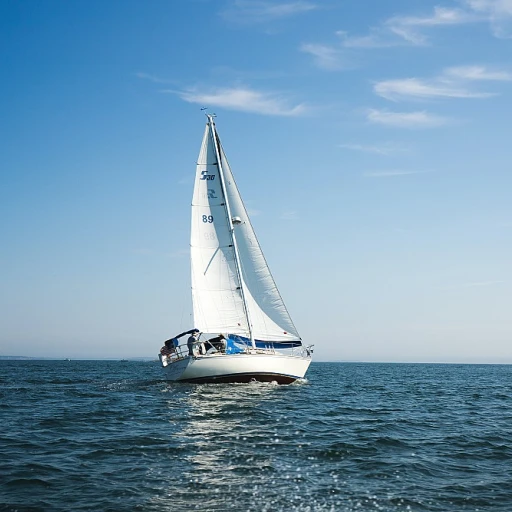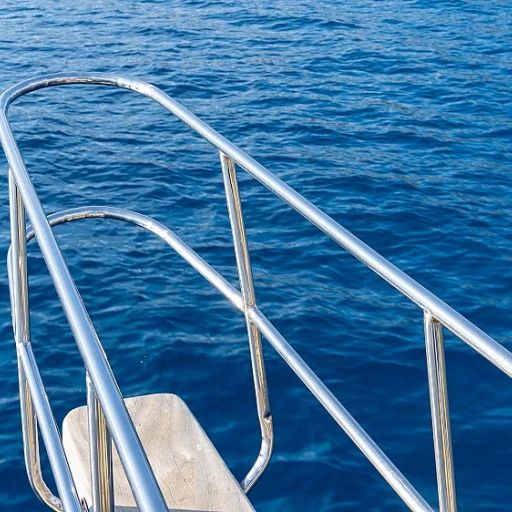The Significance of Shaft Length in Enhancing Yacht Dynamics
Understanding the role of outboard motor shaft length is crucial for optimizing the performance of your yacht. This key component significantly influences both the vessel's efficiency and handling capabilities. Simply put, the shaft length determines how deeply the propeller is submerged in the water, which can make a considerable impact on how your yacht maneuvers.
A well-measured shaft ensures that the propeller is properly aligned with the hull, reducing drag and enhancing the boat's overall efficiency. For instance, if the shaft is too long, the motor could sit too low, resulting in increased drag and diminished speed. Conversely, a too-short shaft may place the motor too high, leading to performance issues such as cavitation or ventilation, where the propeller sucks air instead of water.
To determine the right outboard shaft length for your yacht, the height of the transom plays a pivotal role. This is the vertical section at the rear of the boat where the motor is mounted. Accurately measuring this height—usually done in inches with a tape measure—is essential. Knowing the transom height will guide you in choosing whether you require a short, long, or extra-long shaft to achieve optimal vessel performance.
The considerations for selecting the appropriate shaft length extend to the impact on fuel efficiency. When the shaft is rightly aligned, energy is conserved, and your yacht can traverse longer distances without unnecessary fuel consumption.
Keeping these aspects in mind, choosing the right outboard motor and shaft length can significantly affect the yacht's prowess on the water. For further insights into factors influencing your yacht's performance, such as
choosing the right anchor chain size for your yacht, it's essential to delve into various ergonomic aspects to ensure a seamless sailing experience for you and your crew.
Choosing the Right Shaft Length for Your Yacht
Finding the Perfect Fit for Your Vessel
When selecting the right shaft length for your yacht, it's essential to consider the specific needs of your outboard motor and vessel. The shaft length should match your boat's transom height to ensure optimal performance. Essentially, it is the distance from the top of the transom to the waterline where your propeller operates.
Measuring this accurately requires a tape measure. Start by positioning it at the top transom, stretching down to the waterline, allowing you to determine whether you require a short shaft, long shaft, or even an extra long version.
Bear in mind that boating conditions, the weight of your vessel, and the number of passengers on board can influence the required shaft inches. Much like optimizing your marine battery charger, aligning the correct shaft length with your boat’s specifics is vital to maintaining performance. For a detailed guide on optimizing marine components, explore our article on marine battery chargers.
Common Mistakes in Shaft Length Selection
Frequent Missteps When Choosing Shaft Length
Selecting the appropriate shaft length for your yacht's outboard motor is crucial for optimal performance. However, several common mistakes can impact your boat's efficiency and handling. Recognizing these pitfalls can save you from unnecessary headaches.
- Ignoring the Transom Height: To achieve the ideal shaft length, accurately measure the transom height. This is the vertical distance from the top transom to the bottom of the boat's hull. An incorrect measurement can lead to choosing a shaft that's either too long or too short, affecting the motor's position in the water.
- Overlooking Water Conditions: Different water conditions call for varying shaft lengths. For instance, if you're navigating shallower waters, a long shaft might run the risk of grounding. Conversely, short shafts may underperform in choppy waters.
- Disregarding Ventilation and Cavitation Plates: The shaft's cavitation or ventilation plate should be aligned with the boat's hull bottom. Misalignment can cause excess ventilation, resulting in loss of thrust and increased fuel consumption. Use a tape measure to ensure the plate sits flush with the hull.
- Focusing Solely on Electric Outboards: While electric motors are rising in popularity, they still require careful consideration of the shaft length to ensure efficient operation. The motor shaft for electric outboards must match your transom height to optimize energy use.
Understanding the impact of these factors on your outboard motor can enhance your yacht’s performance. For more technical insights, particularly in terms of boat wiring, you might find the guide on
the intricacies of boat wiring diagrams helpful in complementing your knowledge on mechanical considerations.
Impact of Shaft Length on Fuel Efficiency
The Impact on Energy and Distance
The length of the outboard motor shaft plays a significant role in determining the efficiency of fuel consumption. When a boat’s motor shaft is perfectly suited for its transom height, it contributes to optimal performance, which directly affects fuel economy. An ill-fitted shaft, whether too long or too short, can lead to increased drag and turbulence. This results in higher fuel consumption as the engine works harder to maintain speed and stability.
Inappropriate shaft length can also influence how well the outboard motor propeller performs. Ensuring that the cavitation plate is level with the bottom of the boat optimizes the motor’s efficiency and minimizes power loss. A long shaft on a short transom or a short shaft on a long transom can cause the propeller to operate inefficiently, either being positioned too deep or too shallow in the water.
Moreover, shaft length affects the spirit of a boat by impacting its maneuverability and energy usage. Efficient measuring and adjusting with tools like a tape measure to match the shaft with transom height are essential. Whether you have a traditional gas engine or an electric outboard motor, proper shaft length selection is critical to achieving a balance between power, performance, and fuel efficiency.
Ultimately, understanding the correct length requirements for your outboard motor will lead to enhanced travel distances and cost savings, making every boating adventure more enjoyable.
Shaft Length and Handling in Various Water Conditions
Influence of Different Water Conditions
Selecting the correct outboard shaft length can significantly impact how a yacht handles in various water conditions. Whether you're navigating calm lakes or choppy seas, the shaft's position in relation to the waterline is crucial.
In sheltered waters, such as lakes and slow-moving rivers, a short shaft may suffice, as you rarely encounter large waves that could disrupt the propeller’s submersion. However, this changes drastically when venturing into rough open waters. Here, a long shaft offers better performance by ensuring the propeller stays well below the surface, reducing the risk of cavitation and ensuring a smooth ride.
Dealing with Swells and Waves
When it comes to swells and waves, a long shaft is often more effective. The extra length ensures that the propeller remains submerged even as the boat heels and the water swells. This prevents cavitation, which occurs when the propeller sucks in air from the surface, leading to a significant drop in thrust and boat speed.
Shaft Length and Power Dynamics
The motor shaft length also plays a pivotal role in maintaining optimal power dynamics. If the outboard motor shaft is too long for the water conditions, it can create an unnecessary drag on the boat. Conversely, a short shaft increases the risk of the propeller lifting out of the water due to waves or sharp turns, leading to a loss of propulsion.
It’s important to measure outboard shaft inches accurately, often with a tape measure, from the top transom to the bottom of the boat. This ensures that the anti-ventilation plate aligns closely with the vessel’s bottom, optimizing performance across various conditions.
Electric Outboards and Precision Handling
The rise of electric outboards adds another layer of consideration. These eco-friendly motors often require precise tuning of the shaft length to match specific water conditions, offering a balance between sustainability and functionality.
Hence, understanding and choosing the correct outboard shaft length is vital for a well-handled vessel across all types of waters, providing both fuel efficiency and safety.
Future Trends in Outboard Motor Shaft Design
Innovations and Evolution in Outboard Motor Shaft Length Design
As we look to the future of yacht performance and outboard motor technology, several trends highlight the ongoing innovations in shaft length design. These trends are reshaping the industry and paving the way for improved boating experiences.
One of the most exciting developments is the integration of electric outboard motors. With a growing emphasis on eco-friendly solutions, electric motors are increasingly popular. Designers are exploring ways to optimize motor shafts for electric-powered boats. An efficient motor shaft, whether it be a short shaft or a long shaft, can enhance overall performance while reducing environmental impact.
Additionally, there's an increasing focus on creating modular shafts that allow for adjustability. These shafts can match the transom height of various boats by simply adjusting the shaft inches. This versatility will make it easier for boat owners to measure their outboard requirements accurately and ensure the best shaft length for their needs.
Another trend is the improvement of materials used in shaft production. Modern materials are lighter yet stronger, which can enhance the spirit of boating by improving speed and maneuverability without sacrificing durability. Designers are also focused on creating low-drag profiles and enhancing the cavitation plate design to minimize resistance in water and improve fuel efficiency.
Looking at handling, the industry is innovating in anti-ventilation and ventilation plate designs to maintain optimal motor performance across different water conditions. These advancements are crucial in achieving a stable and smooth ride, regardless of whether your boat is in calm lakes or more challenging ocean conditions.
Finally, with continuous advancements in technology, digital tools are being developed to better measure and optimize outboard shaft length for individual boat specifications. These tools use data to predict the best shaft size for optimal performance, reducing the chances of common mistakes in shaft length selection.
In conclusion, as technologies evolve, yacht owners can look forward to more adaptable, efficient, and eco-friendly options in outboard motor shaft design that cater to diverse boating requirements.
